The World’s Best Retirement Havens in 2017
For just over a quarter of a century, International Living has ranked, rated, and named the best retirement destinations in the world. Each year we’ve refined and improved the process, bringing new categories and considerations into play, gathering new data, and asking more and better questions of a greater number of expats.
We’ve added countries to the shortlist as they moved into the limelight, Malaysia in 2000...Colombia in 2007...and let others drop away. But the winner this year has been constant. For the past 14 years, this country has consistently ranked in the top 10 retirement destinations on the planet. And—for the fifth time—it takes the top spot once again in our Annual Global Retirement Index.
This year sees our most comprehensive index yet, with a list of 24 top retirement destinations, all of which have been put under the microscope and examined as regards their cost of living, retiree benefits, climate, healthcare, and much more.
This thorough questioning and assessment ultimately leaves us with a definitive list of the best retirement havens from around the world. All of which share the values that you can expect from an International Living approved retirement destination, while also maintaining aspects that make them stand out as individuals, meaning our index has a place to suit every taste.
So, without further ado—after months of research, number-crunching, and fact-finding—allow the expats who live there to introduce you to the benefits of the world’s top 10 retirement destinations in 2017.
10. Malta
Valleta, Malta
Glorious pink and gold sunsets. Sapphire blue waters. Centuries-old cities made of honey-hued stone. Vertiginous white cliffs rising from the sea. This is just a taste of the beauty Malta offers to those who live here. And it’s only one small part of what makes it such an extraordinary place to retire.
Malta is easy to overlook—literally—as a desirable retirement destination. On a map, the tiny island chain is represented as a scattering of dots floating in the Mediterranean, between the coasts of Sicily and North Africa. Only two of its main islands, Malta and Gozo, have a substantial population, and both are so small that it only takes 30 minutes to drive across them.
But Malta’s compact size doesn’t detract from the marvelous lifestyle it offers.
Here you can expect 300 days of sun with warm weather lasting through mid-November...mild winters...and a laidback atmosphere with a large and welcoming international, English-speaking community.
For a Mediterranean island, the cost of living is remarkably reasonable. IL Correspondent Barbara Diggs says: “A couple can live here comfortably for less than $2,700 per month. You can rent a two-bedroom apartment in Sliema, one of Malta’s most lively cities, for about $800 per month. Your rent could be as low as $600 per month in the countryside in Gozo. A pleasant dinner out can cost as little as $25 per person, including a glass of local wine.”
Excellent healthcare is another major plus, and the cost of private health insurance is far lower than in the U.S. Even if you have a basic hospitalization plan, prices are so low in Malta that you can cover the cost of doctor’s visits and medications out-of-pocket. For example, a general practitioner visit usually costs around $20 while a specialist may cost $65.
Perhaps best of all, you’ll never get bored in Malta. Thanks to the careful preservation of their 7,000-year history, these islands have a phenomenal number of historic sites to explore, from prehistoric temples to stunning medieval fortifications. There are also endless opportunities for sailing, swimming, snorkeling, and diving. Expats also enjoy the many festivals that Malta and Gozo host each year. Known as festas, these celebrations largely focus on Maltese culture, religion, local foods and wines, and music of every variety.
Perhaps best of all, you’ll never get bored in Malta. Thanks to the careful preservation of their 7,000-year history, these islands have a phenomenal number of historic sites to explore, from prehistoric temples to stunning medieval fortifications. There are also endless opportunities for sailing, swimming, snorkeling, and diving. Expats also enjoy the many festivals that Malta and Gozo host each year. Known as festas, these celebrations largely focus on Maltese culture, religion, local foods and wines, and music of every variety.
And if you do ever find yourself with island fever, then just take a three-hour ferry ride over to Sicily for a change of scenery. Or you can even take a short flight to Paris. On Air Malta, roundtrip flights are available for as little as $175.
9. Portugal
Porto, Portugal
Portugal’s low cost of living and real estate is just some of the reasons for its growing popularity among retirees. According to IL Editor Glynna Prentice: “A couple can live well on as little as $1,700 a month, including rent, in many smaller cities, and from about $2,200 a month in Lisbon, the capital.”
It also doesn’t hurt that Portugal’s climate is generally mild, and that most of its western coast is lined with beaches. And although its coastline is Atlantic, Portugal’s lifestyle in many ways is classic Mediterranean, with a laidback air, an emphasis on friends and family, and plenty of good food and wine (and leisurely mealtimes for enjoying them). Port, the fortified wine beloved by the British, is the signature drink of Porto, the country’s second city. But Portugal’s red and white wines, including the slightly fizzy vinho verde, are also excellent. Seafood appears on most menus, especially bacalhau (salted cod), showing Portugal’s seafaring history is evident in its diet, even today.
The Lisbon area, including the seaside towns of Cascais and Estoril, is a favorite with expats. Lisbon offers all the amenities you’d expect in a capital city, including an international airport, great restaurants and cafés, and museums and concert halls. Though it’s one of Europe’s oldest cities, much of Lisbon is 18th century or later, thanks to the Great Lisbon Earthquake that razed much of the city in 1755. Lisbon proper lies along the banks of the Tagus River estuary, which gives the city a pleasant seaside air. Cascais and Estoril, just half an hour away, are on the Atlantic proper. Known for their beaches, they are popular with both full- and part-time expats, especially the British.
The country’s second city, Porto, offers a mild, moist climate, much like the U.S.’s Pacific Northwest. It tends to attract expats who prefer cool weather and city amenities in a small package. (Though Porto has all the amenities of a major city, its population is a cozy 240,000.)
The Algarve, the country’s warmest and southernmost region, is home to numerous golf courses and sunny beaches. You’ll also find plenty of British expats here, so English is widely spoken.
But, actually, many Portuguese speak English. So while it’s a good idea to learn some Portuguese if you plan to retire here, you can generally get by in English. And Portugal’s friendly locals help make life here extremely pleasant.
8. Nicaragua
Matagalpa, Nicaragua
Nicaragua has changed greatly over the last decade. And all for the better. Pock-marked roads have turned into smooth highways. Renewable energy windmills dot the southern countryside. San Juan del Sur has blossomed into a foodie town, as well as a surf town, and a great place to retire.
Matagalpa is now on the map too, and its coffee sells in cafés around the world. Everywhere you look, there is progress, and the expat lifestyle gets easier and easier every year.
It doesn’t take long to get your resident’s card, and it’s easy for expats to open businesses. Many find that when they open a business they make a U.S. profit, but in a country where their costs are a fraction of what they are back home, allowing for a superior lifestyle.
And that doesn’t mean you can’t still enjoy the amenities and conveniences you had back home either. IL Nicaragua Correspondent Bonnie Hayman says: “Nicaragua has stores like PriceSmart and Walmart, where you’ll find all the electronic equipment you need as well as washing machines, flat screen TVs, and high-end sound systems. Modern supermarkets like Maxi Pali and La Colonia provide turkey, shitaki mushrooms, quinoa, almond milk, all the beef cuts you like, and more.
Alcohol distributor Global Brands also provides all of your wines, preferred tequilas, and everything else to stock a bar. This is a far cry from a decade ago, when your choices were rum and nothing else.”
In 2006, Bonnie’s financial advisor told her she could never retire in the U.S. She had worked since she was 16, paid into Social Security all her life...yet she would have to work forever.
“One vacation later and I made up my mind,” Bonnie says. “I was going to leave the U.S. and retire in Nicaragua. What was there to stay for? Working forever?”
So, about 11 years shy of her retirement, she moved to San Juan del Sur, all by herself, without knowing a soul there. “Sounds scary,” Bonnie admits, “but it was the best decision I ever made.”
So if you’re considering retiring in Nicaragua, just know that each year the infrastructure improves, the chocolate and coffee wins global awards, there’s great healthcare, wonderful people, less stress, no traffic jams, and a couple on a budget can live here for $1,500 a month. What more could you want?
7. Spain
Granada, Spain
Spain’s miles of beaches, the warm climate along its coasts, its low cost of living and real estate, and its relaxed, laidback lifestyle all help to make it a top retirement destination.
The many advantages of this southern European country have long made it a favorite among European vacationers and second-home buyers. Today, it’s increasingly popular among North Americans for many of the same reasons.
Spain offers some of the lowest-cost First-World living in Europe. IL Editor Glynna Prentice says that: “In Spain, a couple can comfortably get by in smaller cities from as little as $1,900 a month, including rent. Small one- and two-bedroom apartments can be rented from as little as $500 a month, and can be bought from about $70,000.” Daily living expenses, especially food, are also low-cost, and the famed Mediterranean diet means plenty of tasty, healthy cuisine.
Spain covers most of the Iberian Peninsula, from the Pyrenees Mountains right down to the Strait of Gibraltar, looking across at Africa. This gives it a climate that ranges from cool and moist in the northwest, to hot and dry in the south, with sunshine most days in southern Spain. Throw in Spain’s many miles of beach—including such famous stretches as the Costa del Sol and the Costa Blanca, on its southern and eastern Mediterranean coasts, respectively—and you have your choice of warm, seaside destinations.
But Spain offers much more than just beach living. Spain’s interior is rich in beautiful, historic cities. The country’s largest cities—Madrid, the capital, followed by Barcelona—are among the world’s greats, yet are much less expensive than their peers, like London or Paris. Valencia, the country’s third-largest city, remains a bargain by any measure. It offers all the big-city amenities you’d expect, including museums, concert halls, sports and science facilities, major hospitals, universities, and an international airport—yet offers a low cost of living. A couple can live here comfortably on a budget of about $2,200 a month.
And for many expats, Spain’s biggest attraction is its friendly, laidback lifestyle. Stroll Spain’s parks and cities, sip a coffee or an aperitif at an outdoor café, enjoy a long, leisurely meal with friends until the wee hours...it’s all part of the Spanish way of life.
6. Malaysia
Penang, Malaysia
Malaysian cities are clean and modern, it’s public transport unrivaled, and its people the friendliest in Asia. And while other Asian countries offer great budget holidays, and some offer first-class vacations, Malaysia manages to cater extraordinarily well to both.
Occupying Peninsula Malaysia and two states on the island of Borneo, Malaysia is known for its idyllic islands—there are 878 of them—its stunning beaches, and its untouched rainforests. Malaysia’s people are a mixture of Malay, Chinese, Indian, and Europeans. The Portuguese were the first Europeans to recognize its rare qualities over 600 years ago, and the Dutch, and then the English quickly followed. This fusion of cultures is unique to Malaysia and has resulted in a truly multi-cultural society where all religions are tolerated.
“In Malaysia, you’ll get the best street food, restaurants and cafés in the region, and some interesting architecture that is unlike any other,” says IL Malaysia correspondent, Keith Hockton. “The food is not just first class, its world class, and the shopping in Kuala Lumpur and Penang, where I live, is die for. From state of the art air-conditioned shopping centers to colorful night markets, Malaysia has it all.”
Malaysia also has no less than four UNESCO world heritage sites (the Lenggong Valley, the Gunung Mulu National Park, Kinabalu Park and the cities of George Town and Malacca). Kinabalu Park is a bird watcher’s paradise, and Mont Kinabalu is the tallest mountain in Malaysia. Sunrise seen from here is something that you will remember for the rest of your life.
Consisting of 13 states and three federal territories, there is a lot to see and do here. It’s just one of the reasons that first time tourists to Malaysia come back again and again, and ultimately end up moving or retiring here.
It’s also one of only three countries in Asia (Singapore and Hong Kong are the other two) where you can buy property freehold. And you don’t need to be living here to do it. When you arrive in the country you’ll be given a three-month visa, and if you decide to buy while you are here, you can.
It’s a very special place, central to Southeast Asia, which means that traveling to other countries in Asia is quick and affordable. And there is a plethora of good, reliable, safe budget airlines that will help you do just that.
Add to that the low cost of living and excellent healthcare, and you have a great retirement haven if Southeast Asia is on your shortlist.
“Malaysia has some of the best-trained doctors in Asia, and most have learned their profession in the U.S. or the U.K. They all speak English, too, which is a huge plus,” Keith says.
Two months ago, Keith tore the anterior cruciate ligament in his knee and needed treatment.
“The cost of the entire procedure, including the initial consultation, MRI, and then the operation, anesthetist, and a private room, was just $2,000. In the U.S., depending on your insurance, the same would have cost $18,000 or more.”
5. Colombia
Medellin, Colombia
Colombia, once an overlooked retirement haven, is now just grabbing the attention of expats looking for a place to live that is close to home, has excellent healthcare, a diverse and temperate climate, and of course is low cost.
The country has shed its dark past and is now thriving, welcoming to foreigners and proud of its culture and heritage. Located on the northern tip of South America, Colombia is a little over 440,000 square miles in area, about the size of California and Texas combined. It touches both the Pacific Ocean and the Caribbean Sea and has the three ranges of the Andes Mountains running down its spine. This beautiful country has something for everyone, including lush green coffee plantations, sparkling crystal beaches, and quaint colonial towns.
All this gorgeous scenery is a backdrop to one of the best things about Colombia—its warm, accepting people. Happy to share their country with foreigners, the Colombians will welcome you into their communities with music, dancing, delicious local food, and of course festivals. Nearly every city and town has a festival to celebrate some aspect of Colombian life.
This beautiful setting and exciting lifestyle also comes at an affordable price. According to IL’s Colombia Correspondent Nancy Kiernan: “An expat living in Medellín’s upscale El Poblado neighborhood pays about $1,250 a month to rent a three-bedroom high-rise apartment, however there is a very wide range of prices available throughout the city beginning around $500.”
Only a short three-hour flight to Florida, Colombia is in the eastern time zone, and due to being located so close to the equator, there is no daylight savings time. Colombia enjoys approximately 12 hours of daylight and 12 hours of night regardless of the month of the year.
Getting from one area of the country to the other is easy. Bus travel is inexpensive, however, due to the mountainous area around most of the country, journey times can be quite long. On the positive side, you can spend the hours soaking in all the magnificent scenery. Many airlines provide service between major cities. Domestic flights are reasonably priced and make for much shorter transit, allowing you to spend more time exploring your destinations.
Life in Colombia varies from laidback, relaxing beach living in the coastal town of Santa Marta, to the culturally rich capital city of Bogotá, filled with theaters, churches, and the Gold Museum, which houses the world’s largest collection of Pre-Columbian gold artifacts. Trendy nightlife, upscale shopping, and an array of imaginative restaurants can be found in both Bogotá and Medellín, as well as several other large cities.
4. Costa Rica
Manuel Antonio, Costa Rica
Costa Rica has been hosting retirees and other expats for more than 30 years, and all the reasons why this Central American gem first attracted those seeking a better life abroad back then still hold true today.
As a safe and stable country, with no army, Costa Rica welcomes foreigners with open arms. People are friendly and happy. The unofficial national motto, Pura Vida, means “life is good.” And that laidback attitude permeates daily life in the country. It’s a stress-free, relaxed existence.
Because expats have been living here for so long, it’s an easy transition. You don’t have to be a pioneer or figure things out—services and modern conveniences are available. And it’s easy to make friends with both locals and expats.
Getting residence is a straightforward process in Costa Rica. For retirees, the pensionado program requires an income of just $1,000 per month from Social Security, a pension, disability, or another similar source. That covers the applicant and a dependent spouse. It’s the perfect solution for long-term living in Costa Rica.
One of the major benefits of Costa Rica is the lower cost of living. “For between $2,000 and $3,000 per month, a retired couple can live well and cover all expenses without scrimping,” says IL’s Roving Latin America Editor Jason Holland. “For example, you can fill your fridge with fresh produce from farmers’ markets for about $35 per week...property taxes are just 0.25% of the home’s assessed value...a decent meal at a local restaurant will run you $5 per plate...and rents start at $400 per month for fully-furnished condos or homes in nice areas.”
Costa Rica also has a wide variety of climates, landscapes, and lifestyles. So there’s really something for everybody. Whether you want a temperate climate in the mountains, in small farming communities...or would rather chill out in a bustling beach town where there’s always a party going on...there’s a place for you in Costa Rica.
One of the major reasons Costa Rica is so attractive to retirees is the highly-rated healthcare. All the latest technology is available, and doctors are trained in the latest techniques. There are two healthcare systems in the country. Legal residents, in the pensionado retiree visa program for example, join the government-run healthcare system known as Caja, which has a network of clinics and hospitals throughout the country. After you pay a monthly fee based on income, your care is free. You can also pay cash or use insurance to access private medical providers in Costa Rica, including clinics, hospitals, and individual doctors. Even in this system, the costs are a fraction of what you might pay in the U.S.
3. Ecuador
Quito, Ecuador
If you look at the overall scores on this year’s Global Retirement Index, you’ll see that the top three retirement destinations on the Index are separated by just three tenths of a point (see the chart below with all the scores for the 24 countries featured in this year’s index).
Ecuador comes in third this year with a final score of 90.7.
But Ecuador has been someplace at the top of IL’s Annual Global Retirement Index for a long time now. This year is no exception, and there are good reasons for that.
For anyone who has excellent weather at the top of their list of personal requirements for a retirement destination, Ecuador can’t be beat. Thanks to its mountainous terrain and its position directly on the equator, you can choose almost any climate you like simply by moving up or down in altitude.
And healthcare in Ecuador’s major cities is the equal to anything available, anywhere, and at amazingly low prices.
Ecuador also comes out on top for its affordability and availability of real estate to rent or buy. This can mean significant long-term savings for anyone making Ecuador their permanent or semi-permanent residence.
The country also offers great retiree benefits. Over-65s get discounts on flights originating in Ecuador, as well as up to 50% off entry to movies and sporting events.
Discounts are also available on public transport (50%) and utilities, with the option of a free landline if you purchase a property.
Also, once you get here you won’t have any problems getting to know your neighbors. According to IL Senior Editor Dan Prescher: “Thanks to growing expat communities in several of Ecuador’s most popular destinations, fitting in once you arrive is remarkably easy, and the infrastructure in those destinations ranks near the top as well.”
Ecuador’s most popular expat havens are Cuenca, Quito, Cotacachi and Salinas. Jim Santos, IL’s Coastal Ecuador Correspondent, lives in the beach town of Salinas with his wife Rita.
Their monthly budget comes in at less than $1,500 a month. But, he reports another huge benefit of life in Ecuador over the past three years.
“Living in Salinas has had a big impact on our health,” Jim says.
“Here in Salinas the weather is great and there are lots of opportunity to be outdoors. We enjoy fresh, healthy foods too. My wife and I have both lost weight and feel better than we have in years. I’ve been able to stop taking medication for Type 2 diabetes, and we are more active than ever, spending time exploring Ecuador and enjoying our new, healthier lifestyle.”
For thousands of expats who have already made the move, Ecuador has ticked all the right boxes for years now, and continues to do so.
For thousands of expats who have already made the move, Ecuador has ticked all the right boxes for years now, and continues to do so.
2. Panama
Panama City, Panama
Modern, comfortable, and tolerant—if you had to describe Panama in just a few words, these are what they’d be. Panama may be famous for its canal, but it’s the ease of living that draws retirees here.
Of course, this country is so convenient thanks to the international trade and migration facilitated by the canal. (And even before that, by Panama’s strategic location and unique geography.) Today’s Panama is a place shaped by interactions with people from Spain, France, Israel, Lebanon, the U.S., China, India, the Antilles, and many more. Newcomers need not fear that they won’t fit in or be welcomed. Panamanians are accustomed to and welcoming of foreigners. In fact, they usually treat them like VIPs.
Add to welcoming people and policies, a rock-solid infrastructure and Panama’s appeal is easy to see. As IL Panama Editor Jessica Ramesch explains: “With top-notch cellular and internet connections, Panama offers a user-friendly and familiar environment you may not have expected to find in the warm, sunny tropics. It’s a big reason why Panama regularly scores so highly in International Living’s Annual Global Retirement Index.”
Add to welcoming people and policies, a rock-solid infrastructure and Panama’s appeal is easy to see. As IL Panama Editor Jessica Ramesch explains: “With top-notch cellular and internet connections, Panama offers a user-friendly and familiar environment you may not have expected to find in the warm, sunny tropics. It’s a big reason why Panama regularly scores so highly in International Living’s Annual Global Retirement Index.”
In terms of retiree benefits, Panama’s Pensionado program is one of the best in the world. In addition to making it easy for foreign retirees to obtain residence, this program also grants members access to a wide range of discounts. Save 10% to 50% on travel, healthcare, hotels, restaurants, and more as a resident pensionado.
There are many other Latin American countries that offer excellent benefits, but when it comes to overall value, Panama checks more boxes than any other. Whether you’re looking to live in a truly cosmopolitan world capital...by a pristine beach ringed by clear blue waters...or on a mountain in the cool, verdant highlands...Panama has much to offer.
And the winner is...
1. Mexico
Puerto Vallarta, Mexico
Mexico has always offered arguably the easiest transition to expat life around: Low-cost, conveniently close, friendly locals and plenty of expats—Mexico offers an appealing balance of exotic foreign culture and familiar First-World lifestyle.
Over recent years, crime and insecurity across the border have made headlines—and yes, there are parts of Mexico we don’t recommend. But this is a big country...and while the mainstream media may bash Mexico, we’ve actually noticed a trend of people gravitating there. Seasoned expats, folks who have lived in countries like Costa Rica, Ecuador, and Belize, are moving to Mexico.
After all, there’s a reason over 1 million Americans call Mexico home. The cost of living is great—expats report living well for as little as $1,200 a month—and has gotten even better with the weakening of the peso against the dollar in recent years. Your dollars now buy nearly 50% more pesos than they did just a few short years ago. The weak peso also means you can pick up great-value real estate (to buy or rent) for even less than you could a few years ago—an apartment that cost $1,300 to rent in 2014 costs $980 now. Those dollars also go even further when it comes to Mexican healthcare. You can get healthcare that’s even better quality than what you’re used to and for one half to one third the price to boot.
According to IL’s Roving Latin America Editor Jason Holland, who lives on the Riviera Maya, there are first-rate hospitals throughout the country—every major city has one. “Even paying cash at private facilities costs a fraction of what it would in the U.S. Most doctors have received at least part of their training in the U.S. or Europe...and many speak English,” Jason says.
English is widely spoken in popular expat spots like Lake Chapala and the Riviera Maya. This makes it easy for you to fit right in. And heck, you can drive down, or fly home for as little as $200 round-trip—so getting home is convenient.
This proximity also makes it an ideal destination for snowbird living, perfect for escaping from the worst of the winter weather. And the diverse selection of climates spread out across this massive country, ranging from hot weather on the beach to spring-like in the highlands, means you’re guaranteed to find weather that’s perfect for you.
“The cost of living in Mexico allows me to live a fun life on my Social Security check,” says San Francisco-native Jack Bramy. Living half a block from the beach in Puerto Vallarta, Jack’s not scrimping. “There are great restaurants and tons of cool bars on the malecón (promenade). My rent is $575 a month for a two-bedroom apartment with a great modern bathroom and nice kitchen.”
If you prefer to live in the Colonial Highlands, there are the picturesque historic towns like San Miguel de Allende, Guanajuato, and Ajijic on Lake Chapala.
Chicago native Steve Garcia, 67, has lived in Guanajuato for four years. “I live well here on Social Security. My expenses are $1,200 a month, including rent. I have a two-bedroom house with a terraced garden,” says Steve. “With the dollar going up I’ve got 50% more to spend.”
After you become a legal resident of Mexico, which is quite easy to qualify for, you can also take advantage of its retiree benefits. Those over 60 get discounts on airline and bus tickets, medical care, museum entrance fees, and much more.
“I love my senior discount card,” says expat Marty Kramer who lives in Playa del Carmen. “All Mexican citizens, including resident expats, can get one when they turn 60. With it, I get discounts on almost everything: healthcare, public transportation, groceries, restaurants, hotels, and even some airlines. It’s up to the business how much of a discount they offer, but it’s usually around 10%.”
If you acquire official residence in Mexico, you can get an INAPAM Card—and all the discounts that come with it. These can range from 5% up to 50%. And recent changes in the law now provide an easier and faster path than ever to permanent Mexican residence.
Most retirees qualify for residence by showing they have the funds to support themselves. And—also unusually—Mexico gives you two ways to qualify. You can show monthly income from Social Security or a pension. Alternatively, you can use assets, such as funds in a savings or investment account, to qualify. You don’t need to transfer these assets to Mexico; you only need to prove that you have them.
“Life here is easy and relaxed,” says IL Mexico editor Glynna Prentice. “And also rich and complex in sensations and experiences. People are friendly and welcoming, their warmth as genuine as the Mexican sun. And roots are deep.
“Whether you’re looking at the mighty ruins of Teotihuacan, the face of a local Maya vendor, or the cool patio of a Spanish colonial hacienda, you sense a depth of history and tradition around you.
“Mexico isn’t perfect—no place is. But its flaws pale when weighed against the vividness of life here.”
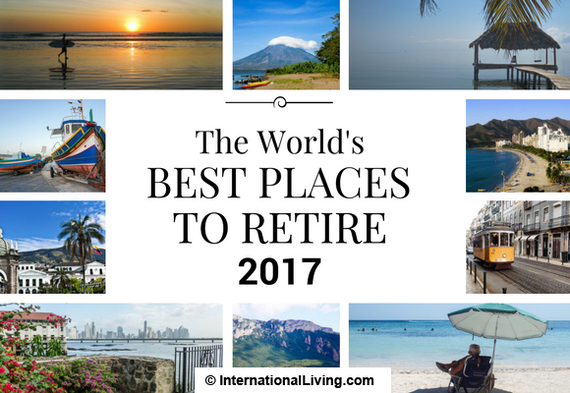
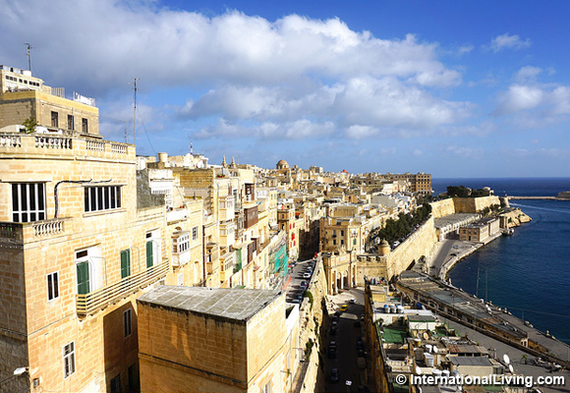
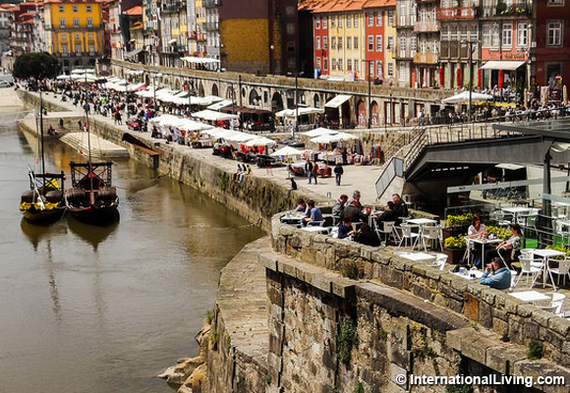
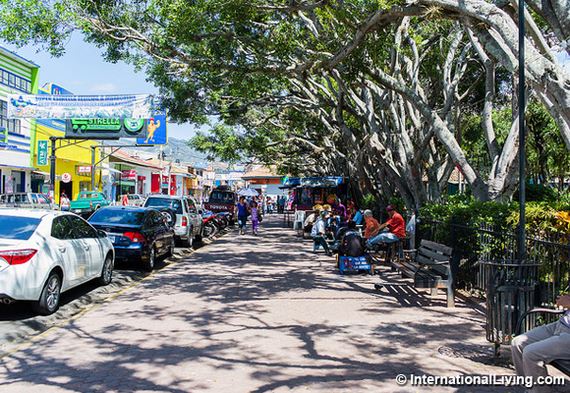

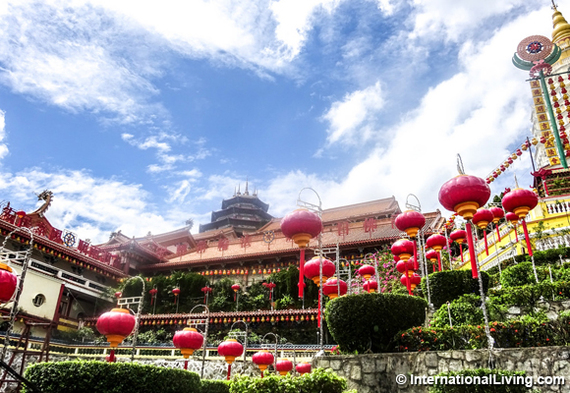
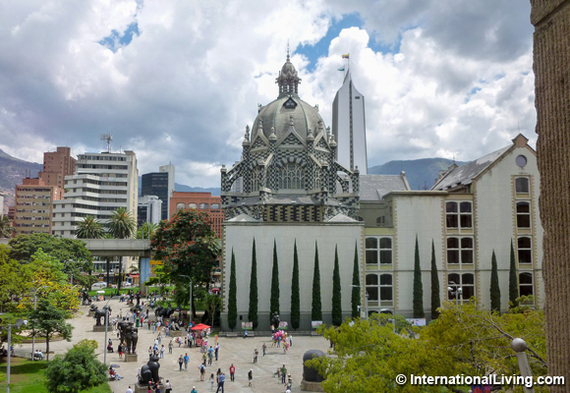
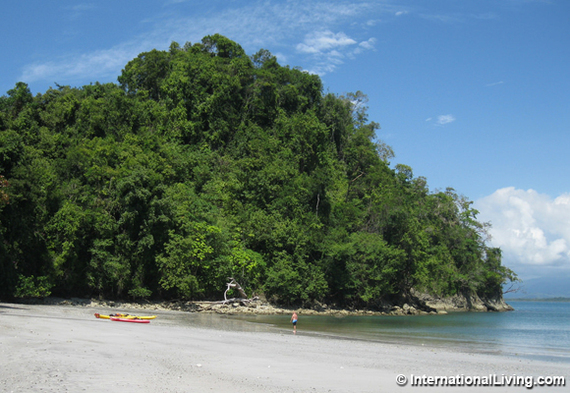
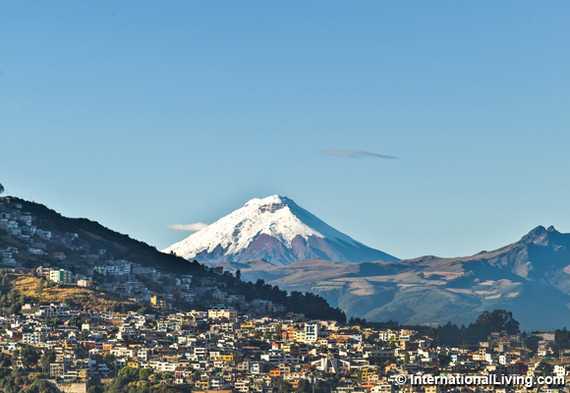
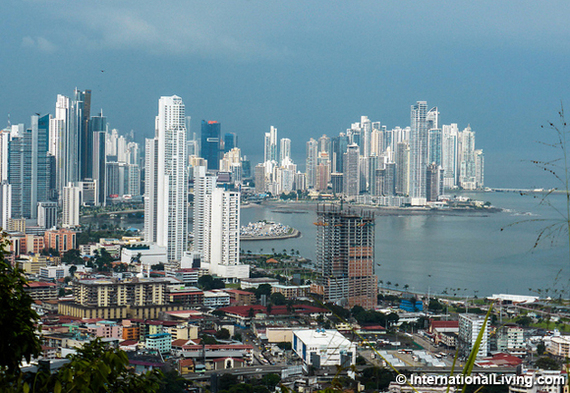
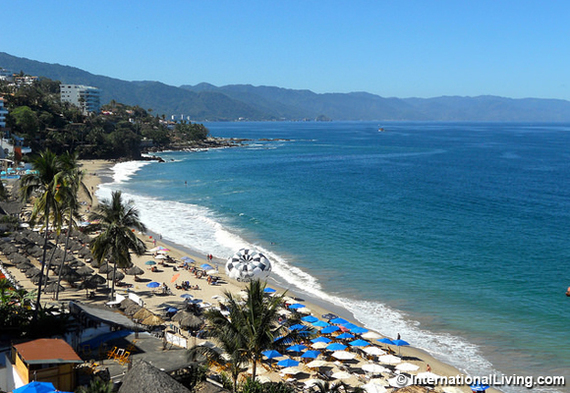
There is a chance you're eligible for a new solar program.
ReplyDeleteClick here and find out if you are qualified now!